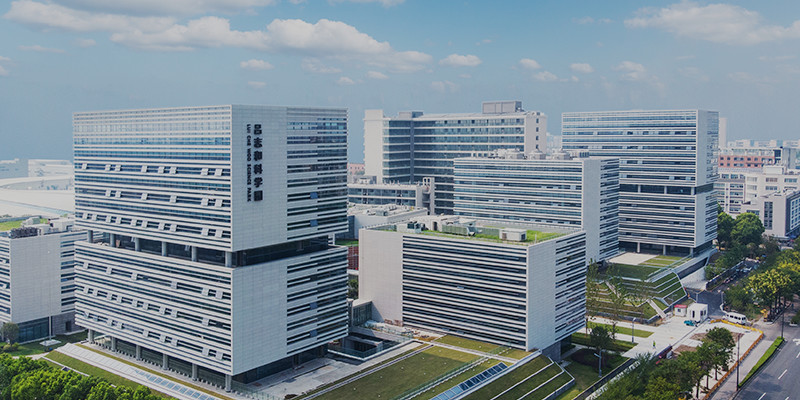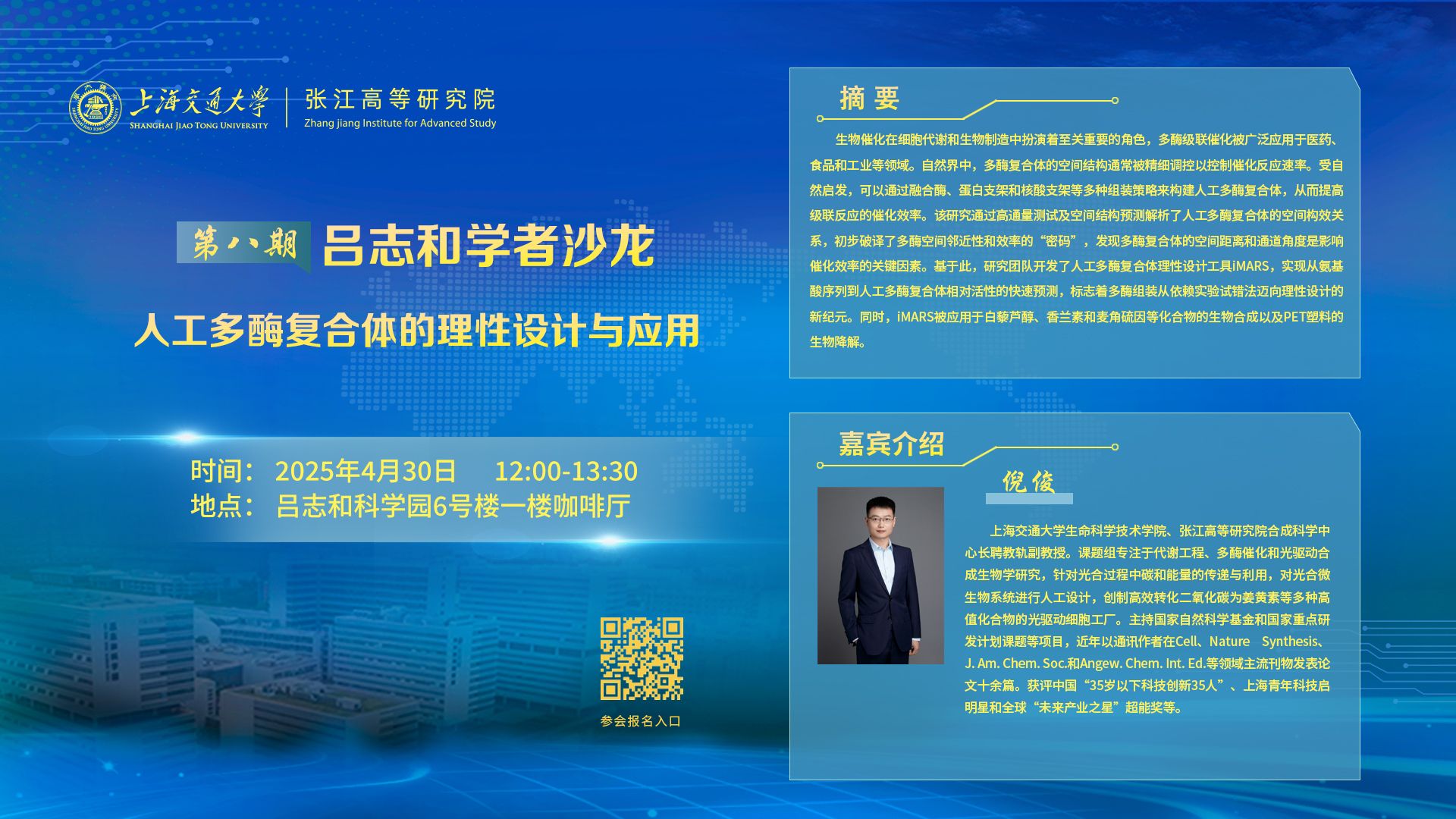搜索



Rational Design and Application of Artificial Multi-Enzyme Complexes
Presenter: Ni Jun
Date: Wednesday, April 30, 2025, 12:00–13:30
Location: 1st Floor Café, Building 6
Abstract
Biocatalysis plays a vital role in cellular metabolism and biomanufacturing. Multi-enzyme cascade catalysis is widely used in medicine, food, and industry. In nature, the spatial arrangement of multi-enzyme complexes is often finely regulated to control reaction rates. Inspired by nature, artificial multi-enzyme complexes can be constructed by combining enzymes, protein scaffolds, and nucleic acid frameworks to enhance catalytic efficiency. This study uses high-throughput testing and spatial structure prediction to analyze structure-function relationships, revealing that spatial proximity and channel angles are key to catalytic efficiency. The team developed a rational design tool, iMARS, enabling activity prediction from amino acid sequences. It marks a new era of rational multi-enzyme design and has been applied to synthesize compounds like resveratrol, vanillin, ergothioneine, and in PET plastic degradation.
Speaker Bio
Ni Jun, Associate Professor (tenure-track), School of Life Science and Technology, Shanghai Jiao Tong University, and Synthetic Science Center, ZIAS. His group focuses on metabolic engineering, multi-enzyme catalysis, and light-driven synthetic biology, including designing photosynthetic microorganisms to convert CO₂ into high-value compounds like curcumin. He has led national research projects and published in Cell, Nature Synthesis, JACS, Angew. Chem., etc. Honors include China’s “35 Under 35 in Tech Innovation,” Shanghai Youth Science Star, and the “Future Industry Supernova Award.”






 Address:No.1308 Keyuan Road, Pudong District, Shanghai
Address:No.1308 Keyuan Road, Pudong District, Shanghai Phone:86-21-54740000
Phone:86-21-54740000 E-mail:zias@sjtu.edu.cn
E-mail:zias@sjtu.edu.cn